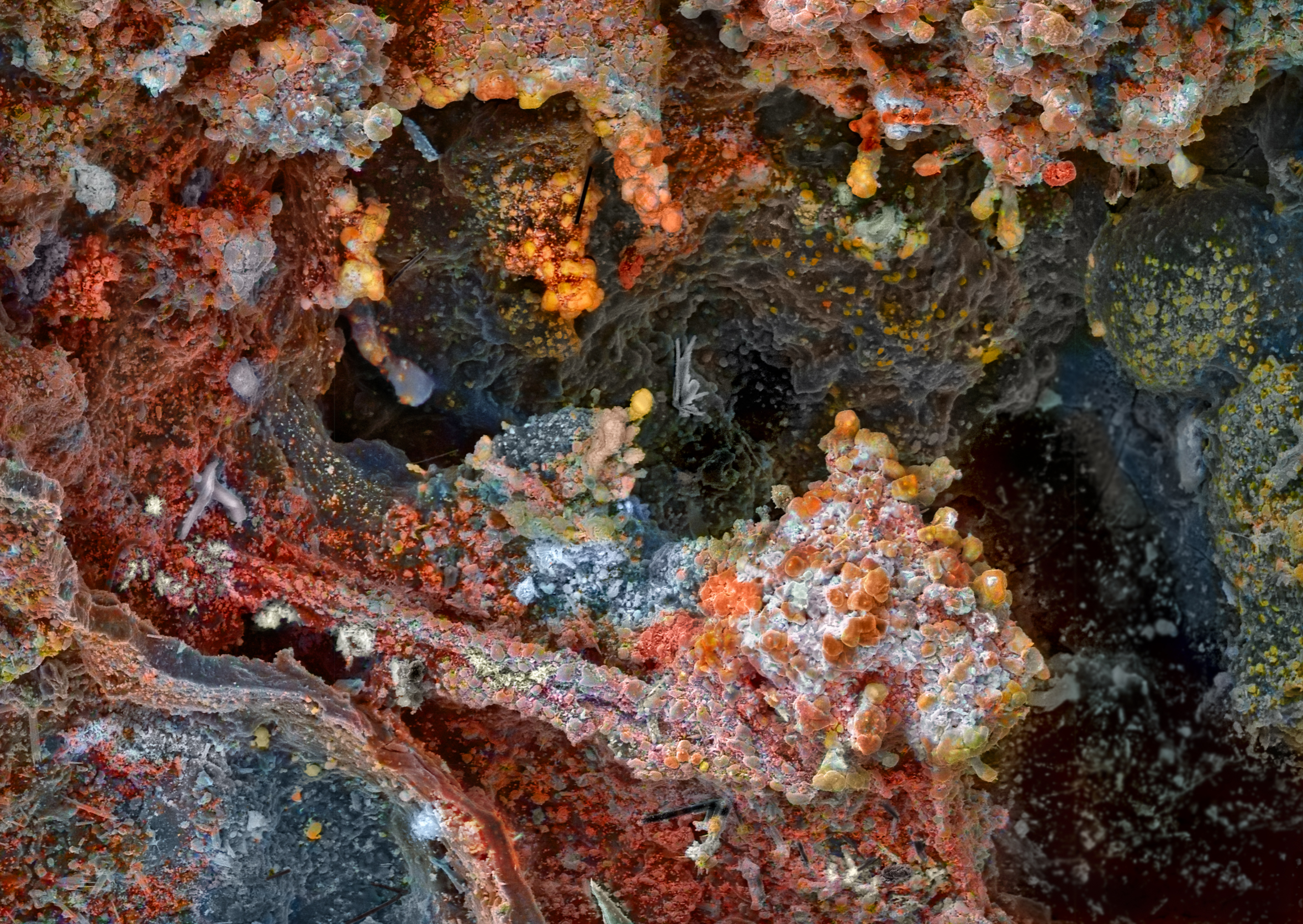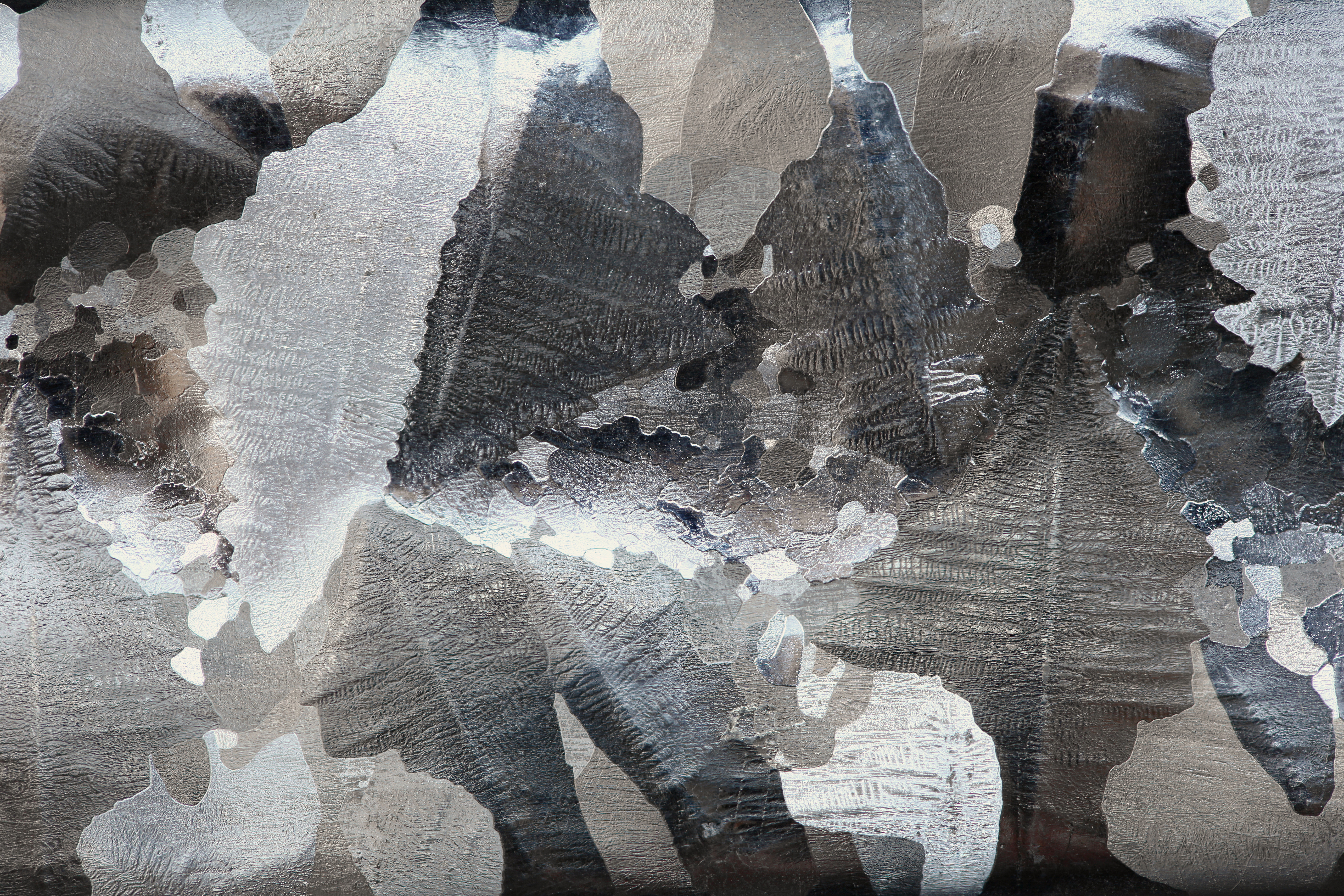|
Aluminium Arsenate
Aluminium arsenate is an inorganic compound with the formula . It is most commonly found as an octahydrate. It is a colourless solid that is produced by the reaction between sodium arsenate and a soluble aluminium salt. Aluminium arsenate occurs naturally as the mineral mansfieldite. Anhydrous form is known as an extremely rare, fumarolic mineral Fumarole minerals are minerals which are deposited by fumarole exhalations. They form when gases and compounds Deposition (phase transition), desublimate or precipitate out of condensates, forming mineral deposits. They are mostly associated with v ... alarsite A synthetic hydrate of aluminium arsenate is produced by hydrothermal method. with the formulation . Modification of aluminium orthoarsenate was carried out by heating different samples to different temperatures. Both amorphous and crystalline forms were obtained. The solubility product was determined to be 10−18.06 for aluminium arsenate hydrate of formula .Fernando L. Pantuzzo ... [...More Info...] [...Related Items...] OR: [Wikipedia] [Google] [Baidu] |
Inorganic Compound
In chemistry, an inorganic compound is typically a chemical compound that lacks carbon–hydrogen bonds, that is, a compound that is not an organic compound. The study of inorganic compounds is a subfield of chemistry known as '' inorganic chemistry''. Inorganic compounds comprise most of the Earth's crust, although the compositions of the deep mantle remain active areas of investigation. Some simple carbon compounds are often considered inorganic. Examples include the allotropes of carbon (graphite, diamond, buckminsterfullerene, etc.), carbon monoxide, carbon dioxide, carbides, and the following salts of inorganic anions: carbonates, cyanides, cyanates, and thiocyanates. Many of these are normal parts of mostly organic systems, including organisms; describing a chemical as inorganic does not necessarily mean that it does not occur within living things. History Friedrich Wöhler's conversion of ammonium cyanate into urea in 1828 is often cited as the starting point of modern ... [...More Info...] [...Related Items...] OR: [Wikipedia] [Google] [Baidu] |
Water Of Crystallization
In chemistry, water(s) of crystallization or water(s) of hydration are water molecules that are present inside crystals. Water is often incorporated in the formation of crystals from aqueous solutions. In some contexts, water of crystallization is the total mass of water in a substance at a given temperature and is mostly present in a definite (stoichiometric) ratio. Classically, "water of crystallization" refers to water that is found in the crystalline framework of a metal complex or a salt, which is not directly bonded to the metal cation. Upon crystallization from water, or water-containing solvents, many compounds incorporate water molecules in their crystalline frameworks. Water of crystallization can generally be removed by heating a sample but the crystalline properties are often lost. Compared to inorganic salts, proteins crystallize with large amounts of water in the crystal lattice. A water content of 50% is not uncommon for proteins. Applications Knowledge of hyd ... [...More Info...] [...Related Items...] OR: [Wikipedia] [Google] [Baidu] |
Sodium Arsenate
Sodium arsenate is the inorganic compound with the formula Na3AsO4. Related salts are also called sodium arsenate, including Na2HAsO4 (disodium hydrogen arsenate) and NaH2AsO4 ( sodium dihydrogen arsenate). The trisodium salt is a white or colourless solid that is highly toxic. It is usually handled as the dodecahydrate Na3AsO4.12H2O. The compound can be obtained by neutralizing arsenic acid: :H3AsO4 + 3 NaOH → Na3AsO4 + 3 H2O The salt (as its dodecahydrate) is isomorphous with trisodium phosphate Trisodium phosphate (TSP) is the inorganic compound with the chemical formula . It is a white, granular or crystalline solid, highly soluble in water, producing an alkaline solution. TSP is used as a cleaning agent, builder, lubricant, food a ....Remy, Francis; Guerin, Henri "Radiocrystallographic study of dodecahydrate trisodium arsenate and vanadate Na3AsO4.12H2O and Na3VO4.12H2O, and some hydrates of fluorinated or hydroxylated salts of general formula: M3XO4.xMY.(10 ... [...More Info...] [...Related Items...] OR: [Wikipedia] [Google] [Baidu] |
Mansfieldite
Mansfieldite is an uncommon mineral that was named after an american geologist, George Rogers Mansfield. It has been considered a valid specie since 1948. It's a member of the variscite group. Mansfieldite creates a series with scorodite, and it is the aluminium analogue of said gem. Mansfieldite is colorless in transmitted light. It is mostly made out of oxygen (47.54%). Other components include arsenic (37.1%), aluminium (13.36%) and hydrogen (2%). Mansfieldite crystals form due to hydrothermal origin in altered and mineralized andesitic pyroclastic rock Pyroclastic rocks (derived from the el, πῦρ, links=no, meaning fire; and , meaning broken) are clastic rocks composed of rock fragments produced and ejected by explosive volcanic eruptions. The individual rock fragments are known as pyroc ...s. Due to its size, mansfieldite is hard to see even under a microscope. The pink variation of the mineral is due to cobalt impurities, otherwise it is white to light gray. It can b ... [...More Info...] [...Related Items...] OR: [Wikipedia] [Google] [Baidu] |
Fumarolic Mineral
Fumarole minerals are minerals which are deposited by fumarole exhalations. They form when gases and compounds Deposition (phase transition), desublimate or precipitate out of condensates, forming mineral deposits. They are mostly associated with volcanoes (as volcanic sublimate or fumarolic sublimate) following Deposition (phase transition), deposition from volcanic gas during an eruption or discharge from a volcanic vent or fumarole, but have been encountered on Coal-seam fire, burning coal deposits as well. They can be black or multicoloured and are often unstable upon exposure to the atmosphere. Native sulfur is a common sublimate mineral and various Halide mineral, halides, Sulfide mineral, sulfides and Sulfate mineral, sulfates occur in this environment associated with fumaroles and eruptions. A number of rare minerals are fumarole minerals, and at least 240 such minerals are known from Tolbachik volcano in Kamchatka Peninsula, Kamchatka, Russia. Other volcanoes where individu ... [...More Info...] [...Related Items...] OR: [Wikipedia] [Google] [Baidu] |
Quartz
Quartz is a hard, crystalline mineral composed of silica (silicon dioxide). The atoms are linked in a continuous framework of SiO4 silicon-oxygen tetrahedra, with each oxygen being shared between two tetrahedra, giving an overall chemical formula of SiO2. Quartz is the second most abundant mineral in Earth's continental crust, behind feldspar. Quartz exists in two forms, the normal α-quartz and the high-temperature β-quartz, both of which are chiral. The transformation from α-quartz to β-quartz takes place abruptly at . Since the transformation is accompanied by a significant change in volume, it can easily induce microfracturing of ceramics or rocks passing through this temperature threshold. There are many different varieties of quartz, several of which are classified as gemstones. Since antiquity, varieties of quartz have been the most commonly used minerals in the making of jewelry and hardstone carvings, especially in Eurasia. Quartz is the mineral defining the val ... [...More Info...] [...Related Items...] OR: [Wikipedia] [Google] [Baidu] |
Rutile
Rutile is an oxide mineral composed of titanium dioxide (TiO2), the most common natural form of TiO2. Rarer Polymorphism (materials science), polymorphs of TiO2 are known, including anatase, akaogiite, and brookite. Rutile has one of the highest refractive index, refractive indices at visible wavelengths of any known crystal and also exhibits a particularly large birefringence and high dispersion (optics), dispersion. Owing to these properties, it is useful for the manufacture of certain optical elements, especially Polarization (waves), polarization optics, for longer light, visible and infrared, infrared wavelengths up to about 4.5 micrometres. Natural rutile may contain up to 10% iron and significant amounts of niobium and tantalum. Rutile derives its name from the Latin ('red'), in reference to the deep red color observed in some specimens when viewed by transmitted light. Rutile was first described in 1803 by Abraham Gottlob Werner. Occurrence Rutile is a common accessory ... [...More Info...] [...Related Items...] OR: [Wikipedia] [Google] [Baidu] |
Aluminium Compounds
Aluminium (or aluminum) combines characteristics of pre- and post-transition metals. Since it has few available electrons for metallic bonding, like its heavier group 13 congeners, it has the characteristic physical properties of a post-transition metal, with longer-than-expected interatomic distances.Greenwood and Earnshaw, pp. 222–4 Furthermore, as Al3+ is a small and highly charged cation, it is strongly polarizing and aluminium compounds tend towards covalency;Greenwood and Earnshaw, pp. 224–7 this behaviour is similar to that of beryllium (Be2+), an example of a diagonal relationship.Greenwood and Earnshaw, pp. 112–3 However, unlike all other post-transition metals, the underlying core under aluminium's valence shell is that of the preceding noble gas, whereas for gallium and indium it is that of the preceding noble gas plus a filled d-subshell, and for thallium and nihonium it is that of the preceding noble gas plus filled d- and f-subshells. Hence, aluminium does not suf ... [...More Info...] [...Related Items...] OR: [Wikipedia] [Google] [Baidu] |




